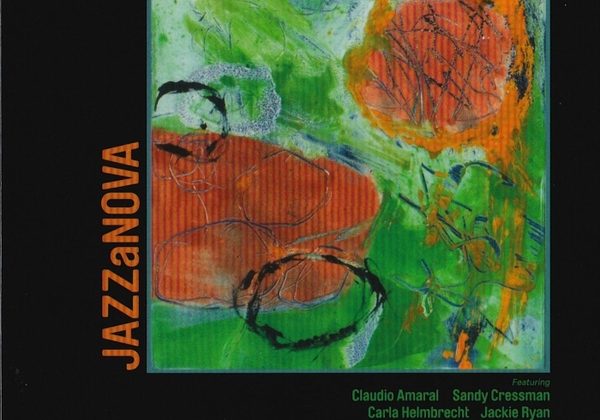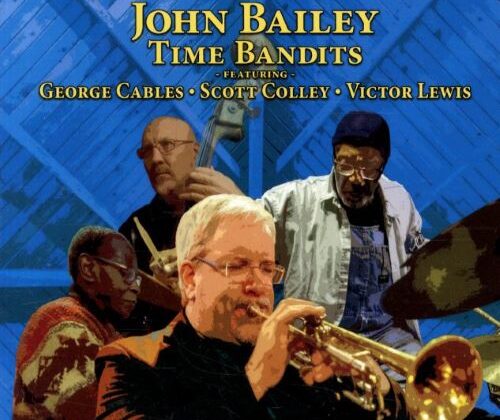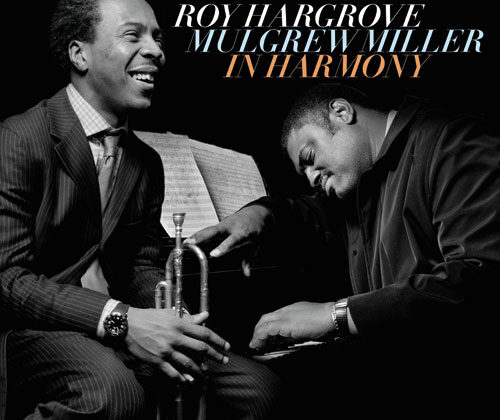Michael Sarian is a musician who has continued to evolve artistically throughout not only his career, but also throughout his life.
Ultimately, the explorative jazz musicians—such as Miles Davis, Thelonious Monk, John Coltrane, Duke Ellington, Charles Mingus, and Herbie Hancock, for example—compiled/compile discographies that, from beginning to end, documented/document never-ending curiosity, unmistakable individuality, and lifelong growth. They continued to develop and record new ideas without abandoning their original identities. They remained/remain true to who they were/are as they reconciled/reconcile the discoveries of their youth with the experiences of maturity. Who knew that Davis’s first album, 1951’s The New Sounds, would lead to 1989’s Amandla?
Sarian has followed a path of creative progress as well. It culminates in his most recent album, Live at Cliff Bell’s, the first live album of his career. The opportunity presented itself quickly when sound engineer Jon Georgievski suggested to Sarian that he record the session at the art deco-inspired nightclub in downtown Detroit during a tour that included Toronto, as well as cities in the U.S. Northeast and Midwest.
With a program of music from previous albums and a few new compositions, Live at Cliff Bell’s documents the connection that Sarian’s quartet establishes with audiences, in addition to confirming his virtuosity and the restless inimitability of his style.
That inimitability arises from a soul that has been formed from his experiences in various residences: his birthplace of Toronto where his Armenian father met his Canadian mother; his move to Buenos Aires to rejoin relatives who likewise fled the Romanian Ceausescu regime, his musical studies in Pennsylvania; his move to New York to earn his master’s degree in music; and his success as part of New York’s jazz scene. Sarian has toured with the Jonas Brothers and Michael Bublé, among others. Sarian also teaches at New York University, and he is the Performing Arts Coordinator for the Armenian General Benevolent Union in New York.
Though Sarian had led his own jazz groups—the Michael Sarian & The Chabones septet and the Michael Sarian & The Big Chabones 16-piece big band—his renewed appreciation of Armenian music within the past ten years altered his style forever. Influenced by the melodies of Armenian music and the infinite improvisational possibilities of free jazz, Sarian decided that “it’s my mission to include Armenian sounds and Armenian music in everything I do as a musician and as a leader.”
At Cliff Bell’s, that’s what he did.
Sarian’s variety of singular personal experiences helped him deliver eventful performances exemplified by the one that he, pianist Santiago Leibson, bassist Marty Kenney, and drummer Nathan Ellman-Bell played there on March 30, 2023.
Through the Armenian folk song, “Yis Ku Ghimetn Chim Kidi” (I Don’t Know Your True Value)—written by the eighteenth-century Armenian poet and musician—Sarian’s group interprets the chant to convey the horror and sadness of the people of this mountainous politically volatile country, bordered by Turkey, Iran, Georgia, and Azerbaijan. Indeed, Sarian’s family’s roots were in Van, a city claimed by various countries throughout the centuries. Eventually, the citizens of Van were subjected to the genocide of 1914, causing multitudes to flee the invading Turks. (Sarian’s grandmother’s family settled in Istanbul.)
Sarian decided to incorporate “Yis Ku Ghimetn Chim Kidi” in his repertoire after hearing oudist Raffi Wartanian play it. As is his style, Sarian starts the piece with its unembellished minor-key melody, and then he expands upon it, as do Kenney and Leibson too. Sarian’s ruminative, reharmonized improvisation leads to bleating exclamations, upper-register flights, and rising intensity before ending with the Armenian chant’s scales.
Oppression of Armenians didn’t end a century ago. It continued into this year.
In fact, the humanitarian crisis within the Republic of Artsakh was continuing at the time of Sarian’s concert at Cliff Bell’s
Who knew?
A war had continued from 1992 to 2020 between the Armenian-majority population of Artsakh and Azerbaijan. (I never saw the war mentioned in American media, although the media thoroughly covered Russia’s 2008 invasion of the smaller republic of South Ossetia.)
Despite peacekeeping efforts, Azerbaijan blocked the only road between Artsakh and Armenia, denying food, fuel, and medicine to Artsakh. On September 24, 2023, a mass evacuation of ethnic Armenians from Artsakh started, causing a refugee crisis within Armenia.
The struggle of the majority ethnic Armenians in Artsakh may have been in the back of Sarian’s mind when he performed “Glass Mountains,” a tribute to the Armenian citizens of Artsakh. (Originally, “Sarian” meant “son of the mountain.”) Supported by Kenney’s initial quarter-note pedal point, Sarian plays off the beat, perhaps suggesting footsteps through the rugged terrain. With an even musical volume despite his alarm, his playing remains calm as it depicts the fragility and weariness of the people within the mountainous region.
On January 1, 2024, the Republic of Artsakh officially ceased to exist.
During a 1924 tour of Jerusalem, Ethiopian President Haile Selassie discovered a brass band consisting of forty Armenian orphans (some from Van) who had fled the 1914 Armenian genocide. He took them back to Ethiopia. The “Arba Lijoch” (“forty children”) formed the Royal Imperial Band. The band’s leader, Kevork Nalbandian, wrote the Ethiopian national anthem, “Teferi Marsh, Ethiopia Hoy.”
Who knew?
Sarian did. Through his investigations of Armenian history.
And he wrote “Portraits of Haile” to commemorate the event a hundred years later.
The “Arba Lijoch” changed Ethiopian music from one that had been entirely string-based to one that incorporated brass instruments as the genre was transformed. It’s appropriate that trumpeter Sarian chose to recall the cultural shift influenced by the Armenian brass musicians.
In contrast to the melancholy and contemplations of the previous compositions, “Portrait of Haile,” framed by Kenney’s resonant bass lines, projects medium-tempo jubilance. Sarian’s impressive lyrical command of the trumpet, influenced by similarly free improvisers like Kenny Wheeler and Tomasz Stańko, provides a respectful tribute to the forty Armenian orphans who created a cultural shift within an African nation. Then, at 4:06, Leibson’s swirling accompaniment moves into the foreground, developing a maelstrom gradually rising in pitch and force as Ellman-Bell’s cymbal crashes and thunderous drumming support it. At 4:55, Leibson relieves the tension with an electrifying free improvisation in the treble clef. Leibson joins Kenney in the unison vamp as Sarian finishes the musical tribute.
Sarian’s “The Pilgrim,” from his album Living at the End of the World, pays tribute to another of his inspirations, Enrico Rava. Recorded on ECM in the early years of his career, The Pilgrim and the Stars projects Rava’s tonal warmth, musical authority, unfettered improvisational imagination, and command of the instrument that now describe Sarian’s style as well.
Rather than Kenney’s quarter-note pedal point, “The Pilgrim” commences with Santiago’s single quarter notes and then quarter-note chords of adjacent treble tones to build suspense until Kenney and Sarian enter to fulfill the suggestions of Santiago’s intro. Performed at a faster tempo than the previously mentioned tracks, the quartet continues to gather strength throughout the performance, until Santiago changes the mood of the piece. The energy of his McCoy Tyner-inspired technique reverts to, at 6:33, a musical tempest similar to his thrilling contribution to “Portraits of Haile.”
“Living at the End of the World” ends the set with a buoyant, lighter approach to offset the weight of some of the preceding compositions. The customers at Cliff Bell’s may have left with some uplift from the piece’s strolling anticipation of the beat and its more traditional jazz harmonies. Live at Cliff Bell’s is a reminder that Sarian’s quartet is one deserving of greater recognition for its mastery of free improvisation, its unique music voice, and its humanitarian concerns.
Artist’s Web Site: www.MichaelSarian.com
Label’s Site: https://shiftingparadigmrecords.bandcamp.com/album/live-at-cliff-bells












